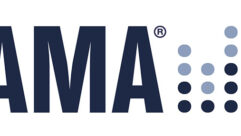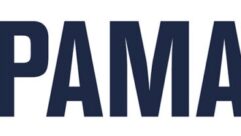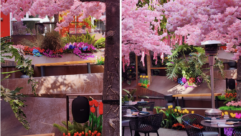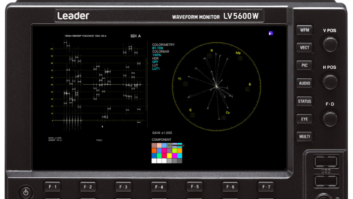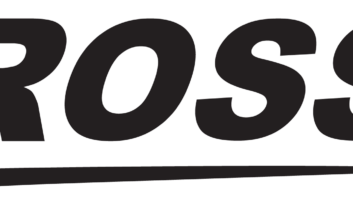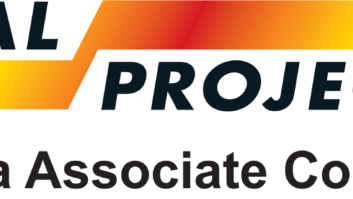

“From inception through delivery, each component in our family of brands is designed to provide a sophisticated, integrated and affordable audio solution,” said Robert Klesser, National Sales Manager, Install & Cinema, HARMAN Brazil. “As soccer transcends sport and becomes an expression of culture, we are honored to be the brand of choice for so many of the venues hosting matches during the 2014 FIFA World Cup.”
While the components installed vary by venue, popular products include HARMAN’s IDX communication systems, AKG microphones, BSS signal processing, Crown amplifiers, Soundcraft digital consoles and JBL loudspeakers. The range of stadiums equipped with HARMAN audio solutions is diverse in terms of size, location and age.
Beginning on a plateau in southeastern Brazil, on the Atlantic Coast, Arena de Sao Paulo hosted the opening match between Croatia and Brazil. Built specifically for the World Cup, the facility seats 68,807 and will serve as the new home for Sport Club Corinthians Paulista. Systems integrator Johnson Controls and audio integrator Soundvision outfitted the facility with the IDX communication system, AKG microphones, BSS BLU-800 networked signal processors, Crown CTs amplifiers, JBL Control Contractor ceiling loudspeakers and Soundcraft Si Expression digital consoles.
Surrounded by mountains in Belo Horizonte, Brazil, which is inland from Sao Paulo and Rio, Estadio Mineirao is a national monument that will host not only World Cup matches but also numerous matches during the 2016 Summer Olympics as well. Built in 1965, the venue seats 57,400 and recently underwent an extensive renovation that took three years. Johnson Controls systems integrator and Soundvision audio integrator equipped the landmark stadium with an IDX communication system, AKG microphones, BSS BLU-800 networked signal processors, Crown I-Tech HD amplifiers, JBL ceiling loudspeakers and Soundcraft Si Compact digital consoles.
Estadio Nacional, in Brazil’s capital city, Brasilia, opened in 1974, was renovated in 2013 and seats 68,009. Systems integrator Siemens and audio integrator Loudness equipped the massive facility with an IDX communication system, AKG microphones, BSS BLU-800 networked signal processors, JBL ceiling loudspeakers and Soundcraft Si Compact digital consoles.
Estadio Castelao is located in Fortaleza, Brazil, considered a “fortress” port on the country’s northeast coast, more than 1,500 miles from Rio. The facility, which opened in 1973 and reopened in 2013, seats 58,000. For sound, systems integrator TODO and audio integrator Telem equipped the stadium with an IDX communication system, BSS BLU-800 networked signal processors, Crown CTs amplifiers, JBL PD5000 Series loudspeakers and Soundcraft Si Compact digital consoles.
Arena da Amazonia is in Manaus, Brazil, the capital of the state of Amazonas and, at 2,659 miles from Rio, the furthest north of the host cities. The stadium, which opened in March 2014, seats 42,374. Systems integrator Johnson Controls and audio integrator Soundvision equipped the facility with AKG microphones, BSS BLU-800 networked signal processors, Crown I-Tech HD amplifiers and JBL Control Contractor Series ceiling speakers.
Arena Pantanal, which opened just two months before the World Cup, is 1,200 miles from Rio, near the Bolivian border and close to the center of South America, in Cuiaba, Brazil. It seats 42,968. Systems integrator Canal Livre and audio integrator Soundvision equipped the facility with an IDX communication system, AKG microphones, BSS BLU-800 networked signal processors, Crown I-Tech HD amplifiers, Crown DCi amplifiers, JBL PD5000 Series loudspeakers and Soundcraft Si Expression digital consoles.
Arena Pernambuco is in an economically deprived area on the outskirts of Recife, Brazil, more than 1,400 miles from Rio. With a seating capacity of 42,800, the stadium was opened in 2013 with the hope that it will act as a catalyst for local regeneration long after the World Cup. Systems integrator NEC and audio integrator Telem installed an IDX communication system, AKG microphones, BSS BLU-800 networked signal processors, JBL ceiling loudspeakers and Soundcraft Si Compact digital consoles.
Finally, the oldest of the World Cup venues, Arena de Baixada is in Curitba, Brazil, south of Sao Paulo and about 500 miles from Rio. Originally built in 1914, the stadium was completely rebuilt in 1999 and then renovated again for the World Cup. It seats 41,456. Systems integrator NEC and audio integrator Telem equipped the facility with a HARMAN lineup that includes IDX communications systems, AKG microphones, BSS BLU-800 networked signal processors, Crown CTs amplifiers, JBL AWC weatherized compact loudspeakers, JBL PD5000 Series loudspeakers, JBL Control Contractor loudspeakers and Soundcraft Si Expression 3 digital consoles.
HARMAN Professional also had a strong presence in the broadcast elements of the World Cup, with multiple Studer Vista consoles in use for television broadcast of the games. In Rio de Janeiro, a Studer Vista 9 digital console was used to broadcast all 64 games via the TV Globo Network to the Jardim Botanico area. In addition, TV Globo’s OB Van HD3 used a Vista 9 to specifically feed games from Maracana Stadium for live transmission to Jardim Botanico. Projac, the main center of television production for TV Globo, also used a Vista 9 in its OB Van HD8 for live shows related to World Cup events. TV Globo also utilized a pair of Vista 8 digital consoles for television broadcast of live performances centered on the World Cup.
In Sao Paulo and Brasilia, TV Globo’s OB Van HD1 was equipped with a Vista 8 console for the games that were hold in those two cities. A Vista 8 and a Vista 9 were also used in Sao Paolo for live performances related to the World Cup.
Lastly, RCN in Colombia used its OB Van, equipped with a Studer Vista 5 digital console, to broadcast the entirety of the Colombian National Team’s games in the World Cup.
HARMAN (
) designs, manufactures and markets premier audio, visual, infotainment and integrated control solutions for the automotive, consumer and professional markets. With leading brands including AKGA®, Harman KardonA®, InfinityA®, JBLA®, LexiconA® and Mark Levinson A®, the Company is admired by audiophiles, musicians and the entertainment venues where they perform. More than 25 million automobiles on the road today are equipped with HARMAN audio and infotainment systems. HARMAN has a workforce of approximately 16,000 people across the Americas, Europe, and Asia and reported sales of $5.3 billion for the twelve months ended June 30, 2014.



